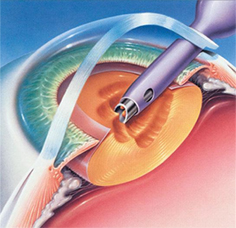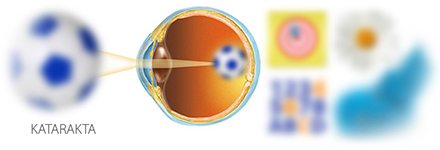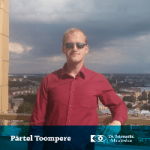20 016 968

Cataract surgery
Technology of the future at your disposal today!
Femtosecond laser technology
We are happy to announce that Dr Solomatin’s clinic in Latvia now offers laser-assisted cataract surgery. The Victus femtosecond laser platform helps to achieve great results both in cataract surgery as well as laser-assisted eye surgery.


Standard cataract surgery
During standard cataract surgery a surgeon uses an ultrasonic device to separate the lens that has become cloudy (cataract), and removes the fragments from the eye.
Pros of the standard operation:
- Widespread use and affordable price
- Efficient removal of cataract in standard cases
- Good results in using standard optical implants
Cons:
- Use of cutting instruments to get access to the eye (micro scalpels)
- Risk of causing injury to surrounding tissues is higher than in laser-assisted surgery
- Harder to achieve optimal optical results with using premium-grade optical implants.
Laser-assisted cataract surgery
In laser-assisted surgery, the surgeon uses a laser beam to remove the cataract. The laser is characterised by high precision, the negative influence on the tissues during the surgery is smaller and there is no need to use ultrasound. The surgeon’s skill, supplemented by modern laser-assisted technology, makes cataract surgery as efficient and safe as possible. The VICTUS® laser-assisted device is the most efficient in cataract surgery.
Pros of laser-assisted cataract surgery:
- Scalpels and cutting instruments are not used
- Safer surgery for eye structures
- Guarantees excellent control during all stages of the surgery
- Allows to achieve maximum results with premium-grade implants
Cons:
- Cost of the surgery is higher than with standard cataract surgery
- Available only in the best-equipped clinics.
Free yourself from glasses and contact lenses!
Register today!
What is a cataract?
A cataract is any clouding of the lens of the eye, and the capsule in which the lens sits. The lens of the eye, similar to one in a camera, fulfils the function of the objective, and focuses the image on the light-sensitive cells of the eye—the retina. The retina functions similarly to film in a camera, and is situated on the inner eyeball. Either due to age or as a result of a disease, the lens slowly loses its elasticity and begins to grow cloudy, which results in worsening vision. A clouded lens is similar to a dirty window glass. We cannot see outside until we wipe it clean. Cataract causes a similar effect. However, unlike window glass, the lens of the eye cannot be simply wiped clean.
What is the surgery like?
Today, our clinic is the only medical centre in the Baltics that offers cataract surgery using the FemtoCataract laser-assisted technology. A few years ago, cataract surgery was done mainly with ultrasonic devices. Nowadays we have improved technology, which makes it possible to perform cataract surgery carefully and safely with a laser device at our disposal. During the operation, the surgeon has complete control over all eye parameters, with an accuracy of a micron. Thanks to built-in tomographs, scanners and the equipment’s high resolution, the surgeon sees the condition of the smallest eye structures in real time. This allows us to achieve optimal results and avoid possible mistakes and complications. Laser-assisted devices have considerably shortened the duration of the surgery. The surgeon spends less time operating within the eye, which significantly decreases the likelihood of infection. In addition, the harmful effects on the surrounding tissues of the eye (cornea, iris) caused by instruments and ultrasonic devices are reduced, which significantly speeds the recovery process and helps to avoid complications after surgery. In our clinic, cataract surgery is carried out together with an anaesthesiologist. The surgery is painless and anaesthetic eye drops are usually a sufficient remedy. At the same time, the anaesthesiologist ensures the patient’s maximal comfort—there is no fear, anxiety, discomfort and pain. In addition, the surgeon controls arterial blood pressure and heart rate indicators and makes corrections when necessary. This guarantees the patient’s maximum comfort and safety during the surgery.
-

In order to prevent patient discomfort during surgery, anaesthetic eye drops are administered beforehand.
-

The clouded lens is carefully fragmented using a laser or ultrasonic device, and the fragments are removed from the eye. Afterwards, the new lens is implanted. If you choose a standard lens, the operation will give you good long distance vision, whereas you’ll require glasses for tasks at a short distance. A premium-grade lens guarantees good vision at any distance.
-

A standard or premium-grade implant is inserted to replace the natural lens that was removed.
Characteristic cataract complaints
A cataract is usually painless and can appear in either one eye or both eyes. In time, vision can become weaker. Colours lose their saturation and images become less sharp. Some patients complain of double vision, night-blindness, and also heightened sensitivity to bright lights. This can significantly influence one’s ability to drive a car. In the case of cataract, glasses are not much help. The only efficient method of cataract treatment is the surgical replacement of a clouded lens with a clear artificial implant. During the surgery, the physician uses a precise laser-assisted device to carefully fragment the lens, remove it from the eye and prepare the eye for the implantation of an artificial lens. Cataract removal also decreases or completely eliminates the necessity to use glasses. The most common cataract symptoms are the following:
- Decrease in sharpness and quality of vision
- Need for brighter lighting
- Having to change the strength of your prescription glasses often.
Benefits of laser-assisted cataract surgery with the VICTUS PLATFORM

Before

After
Laser-assisted technology is more precise, more pleasant for the patient and allows for faster recovery after the surgery. Laser-assisted cataract surgery significantly improves vision, decreases your dependency on glasses and contact lenses. It is possible to repair such defects like near-sightedness, farsightedness and astigmatism, and in some cases also presbyopia.
Testimonials

Käroli Michelson
The next morning the world was clear, my eyes didn't hurt and the eyesight was clear.

Liisi Värv
Laser eye surgery was one of the best investments I've made! The people there were friendly sweet and kind. The service was super!

Kaspars U.
After almost 20 years I see without glasses again. Now, from time to time, I imagine why I didn't do it faster.
Wide selection of optical implants
In order to understand which type of lens is the most suitable for you, acquaint yourself with the key differences
Standard lens
A standard optical implant guarantees great long distance vision after cataract surgery. You’ll still need glasses for reading.
Ask yourself
will I be comfortable with special reading glasses?
Improved premium-grade lens
May improve the range of vision, allowing you to lead an active life. You will have excellent vision at any distance. You’ll have good vision in any situation owing to the improved lens. It is especially important in today’s world, where we lead an active life.
Ask yourself
do I want a more natural range of vision?


Free yourself from glasses and contact lenses!
Register today!
Frequently asked questions
- patients with complicated cataract
- patients with traumatic cataract (the condition developed as a result of trauma)
- patients with unusual eye anatomy (e.g., small anterior chamber of the eyeball)
- children




